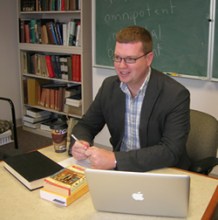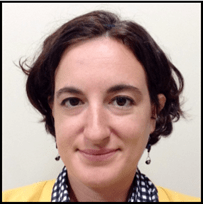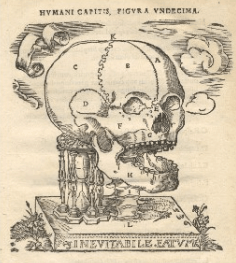The University of Iowa History of Medicine Society invites you to a lecture by Marquis Berrey, Associate Professor in Classics, University of Iowa Ancient Surgery in Early Modern Italy: Celsus, Benivieni, Morgagni Thursday, January 25, 2018, 5:30-6:30 MERF Room 2117 (Medical Education and Research Facility) European medical professionals from the 15th through the early 19thContinue reading “Ancient Surgery in Early Modern Italy | History of Medicine Lecture | January 25, 5:30pm”
Tag Archives: history of medicine
Dr. Helkiah Crooke : Historical and Literary Legacy | History of Medicine Society | Thursday, Sept. 22, 5:30pm
The University of Iowa History of Medicine Society invites you to attend the first talk of the semester. Jillian Linster, PhD candidate, English Department, University of Iowa speaking on: Dr. Helkiah Crooke (1576-1648): The Historical and Literary Legacy of an Early Modern Physician. Thursday, September 22, 2016, 5:30-6:30 Hardin Library for the Health Sciences, RoomContinue reading “Dr. Helkiah Crooke : Historical and Literary Legacy | History of Medicine Society | Thursday, Sept. 22, 5:30pm”
Johannes Dryander | June 2016 Notes from the John Martin Rare Book Room @Hardin Library
JOHANNES DRYANDER (ca. 1500-1560). Anatomiae. Marburg: Apud Eucharium Ceruicornum, 1537. Dryander (also known as Eichmann), professor of surgery at Marburg, was a friend of Vesalius and among the first anatomists who made illustrations after their own dissections. This Anatomiae appeared six years before Vesalius’ great work. This was the first significant book on the anatomyContinue reading “Johannes Dryander | June 2016 Notes from the John Martin Rare Book Room @Hardin Library”
New Exhibit in the John Martin Rare Book Room
Syphilis and Paul Ehrlich: an Historical Case Study Sahachiro Hata, working in Paul Erlich’s laboratory in 1908, discovered the arsenic compound arsphenamine (later known as Salvarsan), which was the first effective treatment for syphilis. The disease, which is transmitted either sexually or congenitally, begins as a superficial affliction but can lead to serious complications includingContinue reading “New Exhibit in the John Martin Rare Book Room”
Notes from the John Martin Rare Book Room, July 2014: Nathaniel Highmore
Nathaniel Highmore (1613-1685) Corporis Humani Disquisitio Anatomica The Hague: Ex oficina Samuelis Brown, 1651. [Image via Fisher Library Digital Collections, University of Toronto]. Nathaniel Highmore of Dorset, England was a British surgeon known for his 1651 treatise on anatomy, the first of its kind to give an accurate account of the circulatory system. Highmore studiedContinue reading “Notes from the John Martin Rare Book Room, July 2014: Nathaniel Highmore”
Elements of the Practice of Medicine
Notes from the John Martin Rare Book Room June, 2014 RICHARD BRIGHT (1789-1858) and THOMAS ADDISON (1793-1860). Elements of the practice of medicine. London: Longman, Orme, Brown, Green, and Longmans, 1839. [ezcol_1half] [/ezcol_1half] [ezcol_1half_end]This rare work represents a joint undertaking by two of the most famous physicians in nineteenth-century Europe. The preface describes it asContinue reading “Elements of the Practice of Medicine”
William Stewart Halsted, Father of American Modern Surgery: a retrospective
The University of Iowa History of Medicine Society invites you to hear: Nicholas P. Rossi, Emeritus Professor, Department of Cardiothoracic Surgery, University of Iowa College of Medicine. Rossi will provide a fascinating look at the life and medical achievements of William Stewart Halsted, considered the father of modern American surgery. Halsted, who lived from 1852-1922,Continue reading “William Stewart Halsted, Father of American Modern Surgery: a retrospective”


